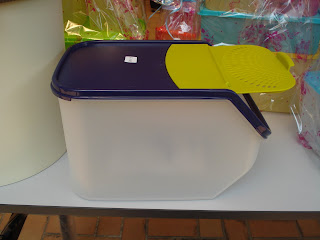Taken from :
TheStar article dated Sunday October 12, 2008
Plastics and your food
Tell Me About
By DR Y.L.M
-----------------------------------------------------------------

Melamine was actually invented in the 1830s by a German scientist and was used to make plastics and laminates from the 1930s.
I HAVE a one-year-old baby and I am extremely frightened of the melamine tainted milk scare from certain Chinese products. I read that melamine actually comes from plastic. What is melamine?
Melamine is an organic compound that is often combined with formaldehyde to produce a resin. Melamine can be found in daily household items such as your kitchenware, floor tiles, upholstery fabrics, formica tables and counters as well as filters.
Melamine is indeed a type of plastic which is fire-resistant. Unfortunately, if you expose melamine products to very high temperatures like in your oven and microwave, melamine will melt.
Melamine was invented in the 1830s by a German scientist and started being used to make plastics and laminates in the 1930s.
Because melamine is so cheap, certain unscrupulous food companies have also started adding it into food as a cheap filler substance. In certain tests, melamine also shows up as a protein so manufacturers can also use it to boost their protein percentage on their label in order for the product to “look” more nutritious.
Why are we only finding out about the dangers of melamine now? Surely there must have been cases before?
In 2007, there was a big scare in the pet food world. Some material containing melamine was shipped by Chinese manufacturers to pet food companies in the US, and it was labelled as “wheat gluten” and “rice protein”. This was added to make pet food.
The pets started getting kidney stones and renal failure, and the US FDA started to investigate. They found that a lot of pet food had been contaminated by the tainted gluten and protein from China. They recalled the brands, but thousands of dogs and cats did die from renal failure.
Now it is found to have been added to baby formula and milk as well. There are a lot of products made from milk such as cakes, sweets, candy, crackers, cereals, snacks, ice cream, coffees and teas. These may have melamine contamination too.
What about the other components of plastic? Are they dangerous too?
More and more research is being done on this and new findings are coming to light. The danger is we are constantly in contact with plastic every single day of our lives, especially when plastic is being used to wrap our food and store our water and drinks.
The US FDA now calls the plastic used to wrap your food as “Food Contact Substances” but they have always assumed that plastics will migrate toxins into your food. They would only approve a manufacturer which can show that these plastic migrations must fall below an acceptable range.
The worst plastic, it is said, to store food or drink in is polyvinyl chloride (PVC).
There has been a lot of debate about plastic toys as well, especially those for toddlers which are put into the mouth.
There still has to be more research before matured conclusions can be made about the subject of plastic in contact with our food and its migration in minimal amounts. But it is certain that if you swallow or inhale plastic casting resin products, such as a plastic resin hardener, you may experience epoxy or resin poisoning.
What will happen in epoxy or resin poisoning?
If you inhale too much epoxy, you may experience breathing difficulties. You may have a severe pain in your throat, which might lead to throat swelling, burning pain in your nose, eyes, ears, lips or tongue. You can also have severe abdominal pain and vomiting, sometimes of blood. Blood may also appear in your faeces. You can develop low blood pressure and have a circulatory collapse.
If you get it on your skin, there may be irritation or burning. Your skin can be destroyed and holes may appear.
This particular poisoning is an emergency and you must seek help immediately.
I have heard that if you microwave your food in plastic containers, it will lead to cancer. Is this true?
Researchers have claimed that if you microwave food in plastic containers, especially if the container is old and scratched, the likelihood of the plastic compounds leaking into your food is higher.
Fox Chase Cancer Centre has done two studies which demonstrate that certain plastic compounds, when released, can affect the genes of female rats. They worry that these compounds may lead to human breast cancer but say that more research needs to be done.
The US FDA has however refuted this by saying although the substances used to make plastics can indeed leach into your food, the levels are very, very low and well below the margin of safety level.
But honestly, a lot of substances in our environment which we cannot avoid can also lead to cancer. Even too much sun exposure can cause cancer.
Obesity and our diets are now linked to cancer. The best thing for us to do is to lead a healthy lifestyle with a healthy diet, avoiding too much red meat. Frequent exercise is also important.
> Dr YLM graduated as a medical doctor, and has been writing for many years on various subjects such as medicine, health advice, computers and entertainment. The information contained in this column is for general educational purposes only. Neither The Star nor the author gives any warranty on accuracy, completeness, functionality, usefulness or other assurances as to such information. The Star and the author disclaim all responsibility for any losses, damage to property or personal injury suffered directly or indirectly from reliance on such information.

+4.2L.jpg)



































+150ml.jpg)






